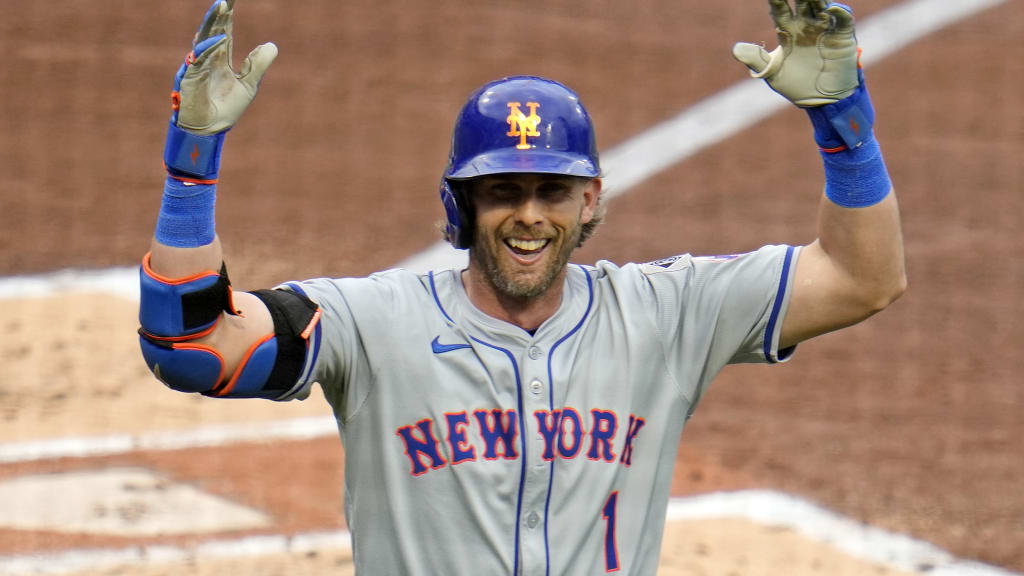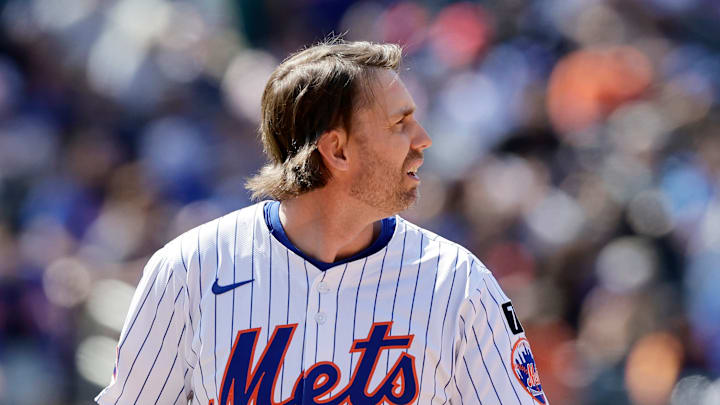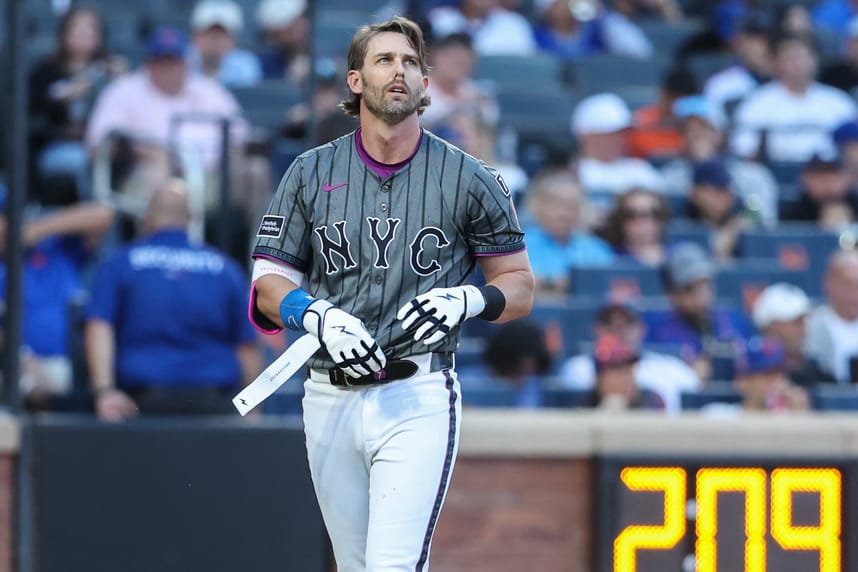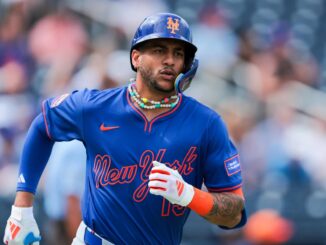
No one had even finished processing the shock of the Brandon Nimmo trade before a new wave of speculation rolled through New York. The moment word got out that the Mets had landed Marcus Semien to take control of second base, fans and analysts alike immediately jumped to the same conclusion: Jeff McNeil must be next out the door.
From a distance, the logic seemed airtight. You move one high-priced outfielder. You bring in a new, expensive infielder. Now an established veteran in the middle of the infield has no obvious spot. In typical front-office logic, that veteran becomes trade bait. It’s the kind of move you’d expect in a simple, textbook version of baseball roster management.

But David Stearns does not build teams out of a textbook.
Instead of moving hastily in an effort to “clean up” the roster, the Mets’ President of Baseball Operations made it clear that McNeil was not going anywhere. Despite the steady flow of rumors and fantasy trades that shipped McNeil to every possible destination, Stearns shut that talk down quickly. And when you really take a closer look at the situation, his reasoning makes much more sense than the knee-jerk reactions of impatient fans.
McNeil’s value to this roster may have actually increased, not decreased, in the aftermath of the Nimmo trade.
A Player Who Creates Options Everywhere He Goes
Moving on from Brandon Nimmo was no small decision. He was popular, dependable, and deeply woven into the identity of the team. Trading him to the Rangers was more than just a change in personnel—it was a cultural jolt. Yet in return, the Mets acquired Marcus Semien, another premium talent with a sizable contract. In the eyes of many, that kind of swap meant someone else had to be sacrificed to balance the roster and the payroll.

Jeff McNeil became the obvious candidate.
But Stearns didn’t see McNeil as a problem that needed to be solved. He saw him as a solution.
When he addressed the media, he made sure to highlight a key conversation he had with McNeil directly. According to Stearns, McNeil not only understood the situation but embraced it. He knows that his role on this team isn’t defined by a single position; it’s defined by flexibility. And that understanding is the true backbone of his value.
More: Royals blockbuster land Braves 40 home run slugger
That phrase Stearns used — “positional value” — explains everything. Semien will be the everyday second baseman. That part is settled. But that doesn’t shove McNeil aside. Instead, it turns him into one of the most useful pieces on the entire roster.

If Semien needs a day off, McNeil can take over at second base without missing a beat. If the Mets need help in the outfield, McNeil can fill in at all three spots. He can handle left, center, or right, depending on the need of the day. Very few players offer that kind of versatility without becoming a liability.
Managers love players who can quietly erase problems before they even become real issues. McNeil is that type of player.
In a long 162-game season, things will go wrong. Players will get hurt. Slumps will happen. Fatigue will set in. When those moments arrive, you want a reliable, experienced professional who can step into almost any position and keep the team stable. That is not a skill you give up easily — especially not for a half-hearted trade offer.
The Financial Side Isn’t as Bad as It Looks
Money is always part of the discussion, and McNeil’s contract is often the main argument against keeping him. He is scheduled to earn $15.75 million this season. On the surface, that can sound like a heavy price tag for someone who might not play in the same spot every single day.

But when you stop focusing on labels like “utility player” and instead look at what he actually contributes, the number isn’t nearly as outrageous.
Last season, in 122 games, McNeil posted a respectable stat line:
-
Batting average: .243
-
On-base percentage: .335
-
Slugging percentage: .411
-
Home runs: 12
-
Runs batted in: 54
-
Strikeout rate: 11.9%
-
Walk rate: 10.6%
No, those aren’t MVP numbers. They aren’t even All-Star numbers. And yes, they are a step down from the seasons when he was competing for batting titles. However, in a league dominated by strikeouts, extreme shifts (even with new rules), and all-or-nothing approaches at the plate, McNeil still offers something increasingly rare: contact.

He puts the ball in play. He works deep counts. He exhausts pitchers by making them throw pitch after pitch. He extends at-bats and forces mistakes. That type of approach has real value, even if it doesn’t always lead the highlight reels.
More: White Sox relative contract land 3-time batting champion from Padres
You don’t build a good lineup with nine players trying to hit 40 home runs. You need balance. You need different skills. You need someone who can grind out a long at-bat in the seventh inning of a scoreless game. Jeff McNeil still does that better than most.
So when you frame his salary as the cost of stability, versatility, and consistency rather than the price of stardom, it suddenly makes much more sense.
The Contract Situation Works in the Mets’ Favor

Beyond just this season, McNeil’s contract is actually very manageable from the team’s perspective. He only has one fully guaranteed year remaining. After that, the Mets hold a club option for 2027, once again worth $15.75 million.
By that point, McNeil will be 35. Realistically speaking, unless he suddenly turns back the clock and hits like a prime batting champ again, that option probably won’t be exercised. It gives the Mets flexibility. If he has an outstanding season, they can keep him. If not, they can move on without long-term consequences.
What does that make 2025 for Jeff McNeil? Essentially, a contract year.

Players in contract years often bring their absolute best. They arrive in better shape, focus more sharply, and play with an extra edge, knowing that their future earnings depend on their performance. That version of McNeil could be extremely valuable to a Mets team trying to re-establish itself as a serious contender.
More: Mariners To Lose $69M Two-Time All-Star Third Baseman to Nationals
From the front office perspective, it’s a low-risk, high-benefit situation. Keeping him costs money, yes, but it also provides security and depth. Trading him for a marginal return just to save a few million dollars doesn’t make competitive sense.
Depth Wins Championships
Championship teams are not built on star power alone. They are built on reliability, depth, and the ability to adapt when chaos hits — because chaos always hits.

If an outfielder strains a hamstring in May, Stearns doesn’t want to make a desperate call for a Triple-A replacement and hope for the best. He wants to simply move McNeil into the lineup and keep the operation smooth. If Semien needs a break, McNeil can step in. If another position suddenly becomes thin, McNeil can cover it.
More: Breaking: Cardinals significant decision trade their most valuable and versatile player
He is the glue of the roster — the piece that keeps everything from unraveling when unexpected problems arise.
He may not be featured on promotional posters or lead the team in jersey sales. He may not dominate national headlines. But teams that win over the course of a long season always have players just like him. Players who quietly contribute, who accept evolving roles, and who put the team above individual glory.
Sometimes, the smartest move a front office can make is the move it doesn’t make.

In this case, holding onto Jeff McNeil isn’t a failure to act — it’s a deliberate, strategic decision rooted in logic and foresight. He likely won’t be the face of the franchise. He may not even settle into one permanent position. But his presence gives the Mets insurance, balance, veteran leadership, and flexibility that simply can’t be replaced easily.
When Opening Day arrives, don’t be surprised to see McNeil still wearing a Mets uniform. Not because the team couldn’t move him — but because they were smart enough not to.
And in the unpredictable world of Major League Baseball, that kind of quiet wisdom often separates good teams from great ones.
More MLB News:
-
Blue Jays blockbuster land Diamondbacks’ top second baseman
-
Mariners get significant $24 million Jorge Polanco’s update
-
Red Sox officially cut ties with All Star veteran catcher
-
Giants have been priced out of closer market after lucrative deal
-
Mariners to make blockbuster trade for $116.5 million Diamondbacks Slugger to replace Leo Rivas
-
Braves blow to newfound roster flexibility with blockbuster deal for Padres designated hitter
-
Phillies Blockbuster Trade Lands Angels’ Slugging Outfielder In 2-Player Deal



Be the first to comment